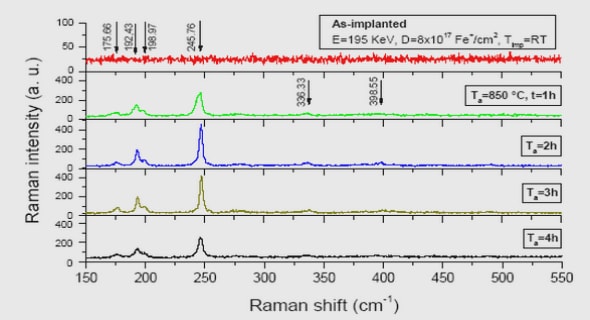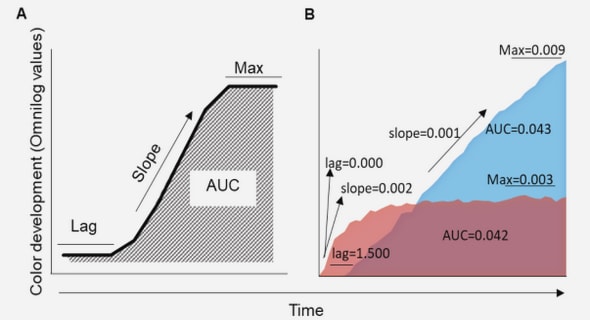Get Complete Project Material File(s) Now! »
Density ratio of current to ambient fluids
Benjamin (1968), Rottman & Simpson (1983), Haertel et al. (2000), Marino et al. (2005), and Ungarish & Zemach (2005) discussed the term of Boussinesq flows, which correspond to a small density difference between fluids. The density difference is mostly driving a high flow of the initial density jumping across the interface. The differences in the structure and shape of a gravity current depend on the ratio of initial density between the dense and the light fluids. When the two fluids densities are comparable (approximately equal), the progress of the gravity current helps understanding the presence of the ambient fluid, which imposes a significant resistive force on the intruding current. However, Birman et al. (2005), Etienne et al. (2005), Lowe et al. (2005), Ungarish (2007), and Bonometti et al. (2008) focused of the cases in which the current density is much higher than the ambient one. In the case of a dam break flow in which water spreads in the air, the current is not affected by any resistance from the surrounding ambient. Typically, the density difference is small enough for the Boussinesq approximation to be valid. The Boussinesq approximation is applied to problems where the fluid varies in temperature from one place to another, driving a flow of fluid and heat transfer. The Boussinesq gravity current acquires shape with a head, and a body as shown in (§2.2-Fig.2.2), while the thickness of a non-Boussinesq current decreases monotonically while approaching the ambient fluid, reaching a minimal value at the front of the current. Also, the current acquires a final height at which the flow is reversed, and returns to the bottom where it spreads as a gravity current. The brines produced from the desolation process are usually discharge into coastal waters as an example of denser current injection into lighter ambient.
Density difference of current and ambient fluids
The difference in density between the gravity current and ambient fluids is due to temperature, concentration, or compositional (different fluids completely) variations, or as an outcome of particles suspended. Bonnecaze et al. (1993), Hallworth & Huppert (1998), Gladstone et al. (1998), and Necker et al. (2002) characterized the case of a particle-laden current. Fresh water (lighter fluid) exits from a river into the ocean (dense liquid), it flows along the surface, partially due to the difference in salinity between fresh and saline water as shown in Fig. 2.1b. The turbid mixture spreading on the seafloor represents an example where the excess density in the current comes about from the suspension of sediments as shown in Fig. 2.1a. In a non-mixing case, the density of a particle-laden current continues to develop in space and time as a result of the continuous deposition of particles and possible re-entrainment back into the flow (if the current is energetic enough).
Continuous release with finite volume
Simpson (1972), Huppert & Simpson (1980), Bonnecaze et al. (1995), Hacker et al. (1996), Gladstone et al. (1998), Shin et al. (2004), and Cantero et al. (2007a) described the gravity current as a finite release. Following their description, a fixed volume of fluid is suddenly discharged into an ambient environment of a different density. Whereas Garcia & Parker (1993), Hogg et al. (2005), Sequeiros et al. (2009), and Shringarpure et al. (2012) described a continuous release. Based on the source configuration, there are two major types of gravity currents: constant-volume (or fixed-buoyancy) and continuous-flux (or continuous-buoyancy). Constant-volume gravity currents are generated in the laboratory through the use of a lock-exchange tank (Chowdhury & Testik 2014). As a rule, the current release is produced from a large tank with a time-dependent flux q as = ! »!, where ! is a positive constant, » is the time of positions, and # is an exponent either positive (waxing release), negative (waning release) or null (fixed, limited volume release). The limited release is observed when the sides of a container suddenly collapses releasing the embodied fluid instantaneously, while a continuous release can be the consequence of a small rupture along one of the edges of a large container or a pipeline leading to a continuous discharge of material. The fluid spreading due to a constant source of buoyancy on the surface or the bottom of a calm ambient was investigated experimentally and theoretically. Britter (1979), Chen (1980), Didden & Maxworthy (1982), Huppert (1982), and Lister & Kerr (1989) provided the estimation equations of the axisymmetric gravity current radius as a function of time, and source flow parameters (see §§2.3.1).
Geometrical limitations
In general, the gravity currents are studied in one of two geometric constraints, in particular the planner and the axisymmetric setups. These configurations are widely searched due to their simplicity on the contrary of my dissertation case. Experimental and numerical studies provide an easily construct and a more flexible challenge for modeling aims (Shallow Water equations and Box Model). The planar release case, a flat rectangular gate at first separates a rectangular reservoir of fluid from an ambient with lower density. As well, at the start of the axisymmetric three-dimensional release case, the current is confined inside a hollow circular cylinder at the center of a large tank containing the ambient fluid (Huppert 1982, and Cantero et al. 2007b). Huppert & Simpson (1980), and Cantero et al. (2007a) was investigated the small angle of expansion typically 10-15° by an expanding inside the tank.
The gate would be partially lifted up, and the restricted fluid would be continuously fed to maintain the desired volumetric discharge rate as a continuous release. The setup of the planar case used of as a two-dimensional releasing since the current is confined to move in a specified direction. While for the set-up of the circular discharge case, the current would spread radially outwards (in all directions) but remains axisymmetric because of the fundamental circular nature of the release.
Bottom gravity currents structure
Bottom gravity currents are formed by a head region at the front, which is usually deeper than the following tail. It advances into the ambient fluid and it is followed by the body or sometimes a tail (Kneller & Buckee, 2000). Although some mixing usually occurs at the head, the clear distinction between the gravity current and the ambient fluid typically remains. During propagation, the mass and momentum balance in the head differs significantly from in the body (Middleton 1993). The head must displace the stationary ambient water resulting in a greater thickness than the trailing body. As shown in Fig.2.2, a cross-section of 2D gravity current along a horizontal bottom surface, generated by a constant buoyancy flux ‘constant-volume release’ (see §§ 2.1.3) at the left end could be considered. It propagates with a distinct dividing line making a body, a head or/and a front.
Figure 2.2: Structure Scheme of a bottom gravity current (Chowdhury & Testik 2014).
Generally, the front part of this current, which is deeper/thicker than the body, is known as the head of the gravity current (Britter & Simpson 1978). The symbols: S represents the particle erosion from the bottom, D particle deposition from the gravity current, !velocity of the front, « # entrainment velocity into the current, $% density of the current, and $& density of the ambient water (Chowdhury & Testik 2014). The frontal zone of a propagating saline gravity current had been investigated in a number of previous studies (e.g. Simpson 1969, Fleischmann et al. 1994, Härtel et al. 2000a & b, La Rocca et al. 2008, and Ottolenghi et al. 2016a, b & 2017). The following sections focus on the structure of the bottom gravity currents propagation over a horizontal bed.
Table of contents :
ABSTRACT
AKNOWLEDGEMENT
CONTENTS
LIST OF FIGURES
LIST OF TABLES
ACRONYMS
LIST OF SYMBOLS
CHAPTER 1 : INTRODUCTION
1.1 GRAVITY CURRENTS
1.2 STATEMENT OF THE PROBLEM
1.3 METHODOLOGY
1.4 OUTLINE OF DISSERTATION
1.5 ORIGINAL CONTRIBUTIONS
CHAPTER 2 : LITERATURE REVIEW
2.1 CLASSIFICATION OF GRAVITY CURRENTS
2.1.1 Density ratio of current to ambient fluids
2.1.2 Density difference of current and ambient fluids
2.1.3 Continuous release with finite volume
2.1.4 Geometrical limitations
2.2 BOTTOM GRAVITY CURRENTS STRUCTURE
2.2.1 Distribution of bottom gravity current concentration
2.2.2 Distribution of the velocity in a bottom gravity current
2.3 DISPERSION OF DISCHARGES OF BUOYANT GRAVITY CURRENT JET
2.3.1 The flow conditions
2.3.2 Buoyant jet length scales
2.3.3 Gravity currents on a flat bottom in calm ambient waters
2.3.4 Physical properties of heavy gravity currents
2.4 ENTRAINMENT AND MIXING GRAVITY CURRENTS
2.4.1 Entrainment
2.4.1.1 Analysis of entrainment
2.4.1.2 Total entrainment
2.4.1.3 Entrainment of dense jets
2.4.1.4 The dependency and velocity of entrainment
2.4.2 Turbulent mixing
2.4.2.1 Fractional area/volume ratio of the dense current
2.4.2.2 Potential energy
2.5 NUMERICAL MODELING OF GRAVITY CURRENTS
2.5.1 Gravity current model into static ambient water
2.5.2 Gravity current model with dynamic ambient water
2.5.3 Numerical methods
CHAPTER 3 : EXPERIMENTAL STUDY
3.1 INTRODUCTION
3.2 APPARATUS AND EXPERIMENTAL PROCEDURE
3.2.1 Experimental setup
3.2.2 Measurement techniques
3.2.3 Experimental procedures
3.3 EXPERIMENTAL PARAMETERS
3.4 IMAGE ANALYSIS TECHNIQUE
3.4.1 ImageJ software
3.4.2 Image processing
3.5 THE CONFIGURATION OF GRAVITY CURRENTS
3.5.1 Experimental front position
3.5.2 Propagation Phase Transitions
3.5.3 The lobe-cleft instabilities
3.6 SUMMARY
CHAPTER 4 : 3D NUMERICAL MODEL AND COMPUTATIONAL DETAILS
4.1 INTRODUCTION
4.2 NAVIER-STOKES EQUATIONS
4.3 THREE-DIMENSIONAL NUMERICAL MODELING
4.3.1 The numerical model
4.3.2 Initial and boundary conditions
4.3.2.1 Initial conditions
4.3.2.2 Boundary conditions
4.4 NUMERICAL METHOD DESCRIPTION
4.4.1 OpenFOAM characterization
4.4.2 File structure of OpenFOAM cases
4.4.2.1 A constant directory
4.4.2.2 A system directory
4.4.2.3 The time “0” directories
4.5 IMAGE PROCESSING ANALYZE
4.6 THE CONFIGURATION OF GRAVITY CURRENTS
4.6.1 Numerical front position
4.6.2 Propagation Phase Transitions
4.6.3 The lobe-cleft instabilities
CHAPTER 5 : RESULTS
5.1 INTRODUCTION
5.2 FRONT POSITION OF THE JET: EXPERIMENTAL AND NUMERICAL RESULTS
5.3 VELOCITY AND DENSITY PROFILES
5.4 TURBULENT MIXING
5.5 ENTRAINMENT RATES
5.6 SUMMARY
CHAPTER 6 : CONCLUSIONS AND FUTURE WORKS
6.1 CONCLUSIONS
6.2 FUTURE WORKS
APPENDIX A : NEWTONIAN GRAVITY CURRENT EQUATIONS
A.1 EQUATIONS FOR HORIZONTAL CHANNEL
A.2 EQUATIONS OF SLOPING BOTTOM
A.2.1 Conclusion
A.2.2 Verification
A.2.3 Remark about a horizontal channel
A.3 EXACT SOLUTION TO NEWTONIAN GRAVITY CURRENT BENEATH A STATIC WATER
LAYER IN HORIZONTAL BASIN
APPENDIX B : NON-NEWTONIAN GRAVITY CURRENT EQUATIONS
B.1 EQUATION FOR HORIZONTAL CHANNEL
B.1.1 Calculating the pressure
B.1.2 Equation of conservation of momentum
B.2 EQUATIONS OF MOTION IN AN INCLINED BOTTOM
BIBLIOGRAPHY


